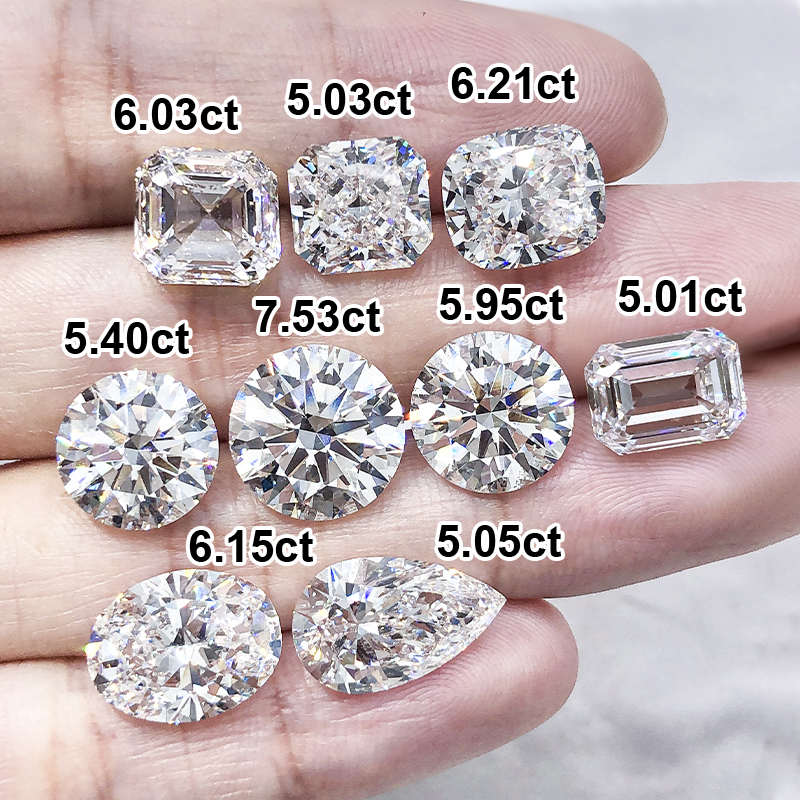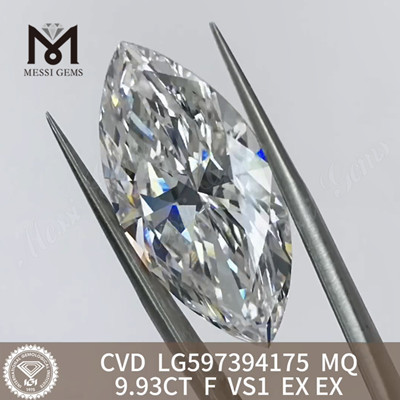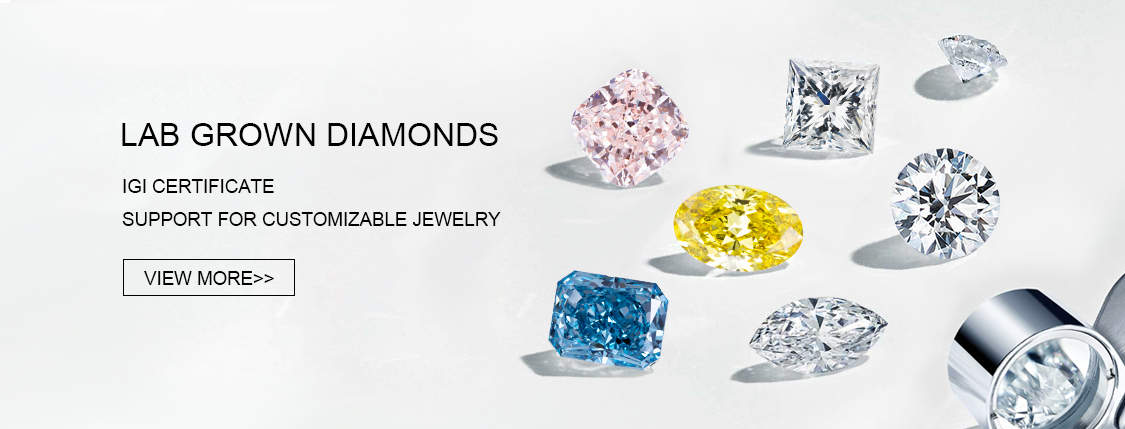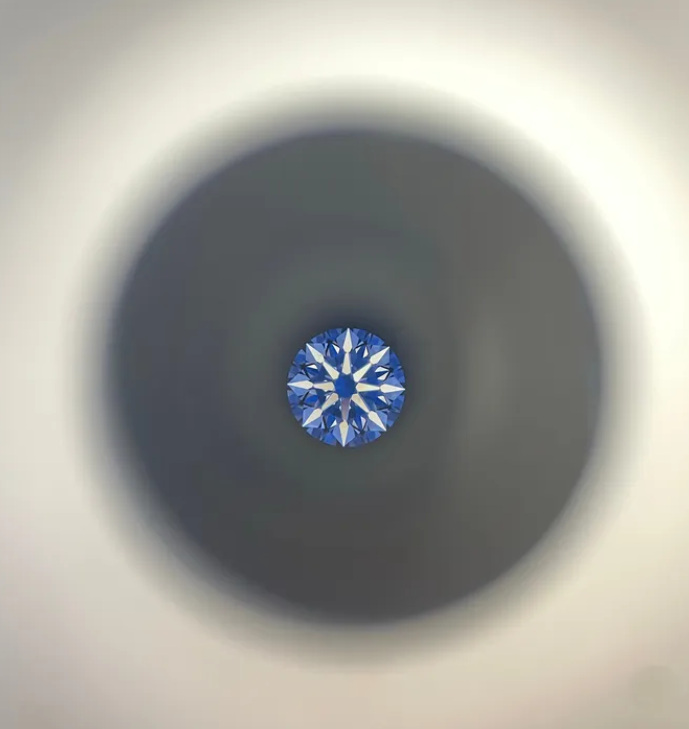
First, let's talk briefly about Lab grown diamonds, which are diamonds grown in a laboratory using certain techniques and processes to produce crystals with the exact same appearance, chemical composition, and crystal structure as natural diamond.
A simple analogy can be made to say that natural diamond are ice formed in the wild, while Lab grown diamonds are ice formed in the refrigerator. Lab grown diamonds are environmentally friendly, have outstanding sustainability benefits, and are far less expensive than natural diamonds. Of course, Lab grown diamonds are also divided into three, six, nine grades, so if you want to choose a good diamond in all aspects, you can refer to the following points.
Lab Grown Diamond Certificate:
The reason why certificates are at the top of the list is because they are an essential partner of the diamond. How to guarantee the authenticity of the parameters of the diamond, it depends on the authority of the certificate.
The most comprehensive is IGI (International Gemological Institute), both electronic and paper version, very perfect, 4C, cultivation methods, whether to change the color and anti-counterfeiting. However, it should be noted that IGI has several testing points, India, the United States and Shanghai, China, and the most important thing to note is that the certificate from India can be double-checked and dropped. The best one is the certificate verified by IGI in Shanghai, China. It is also best to check the waist code when buying and choose a reliable dealer.
GIA (Gemological Institute of America), in terms of natural diamonds to give the identification results are indeed detailed, but in the cultivation of diamonds in this regard is not perfect, and even a bit of "special treatment" - the cultivation of diamonds 4C identification results of fuzzy treatment, although the subsequent improvement, but the price of appraisal is also high.
NGTC (National Jewelry and Jade Quality Supervision and Testing Center), the National Inspection is certainly authoritative, but for the cultivation of diamond 4C grading of this piece of words, the National Inspection will be slightly simple and rough, not detailed enough.
Lab Diamond Methods:
Lab grown diamond are divided into CVD (Chemical Weather Deposition) cultivation and HPHT (High Temperature High Pressure) cultivation, which have their own advantages and disadvantages.
First of all, let's talk about HPHT, this is a laboratory chamber, put a crystal seed and metal catalyst, through the control of high temperature and high pressure environment, so that the diamond powder dissolves and then form diamond crystals.
Through high temperature and high pressure to reduce the brown color of diamonds, so this method of cultivation of diamonds with high color grades, but the individual will have a phosphorescent reaction, this will not be reflected in the certificate.
HPHT clarity is relatively poor compared to the CVD, because of the use of metal catalysts in the cultivation process with metal catalysts, which leads to diamonds will be inside the metal residue, the severity of which will be sucked up by the magnets, so a lot of HPHT diamonds can't pass the diamond tester pen and will be measured as moissanite reaction.
The CVD cultivation method means that a thin diamond wafer is used as a seed and placed in a cultivation tank to artificially simulate the growth environment of a mineral diamond, causing carbon atoms to accumulate on the crystals to form a rough diamond. Diamonds grown by this method are llA diamonds, which are very clean and translucent. Most of the diamond colors are FGH, and the DE colors are less.
If you want to choose a better and safer Lab grown diamond, we recommend you choose a CVD diamond, and if you want to choose a slightly lower price, go for HPHT (if you are not afraid of not being able to pass the diamond tester), but compared to natural diamonds, the price of Lab grown diamonds is already very low, and you have already saved a lot of money, so we don't feel the need to save that little bit of money.

9.93CT F VS1 EX EX levate Your Inventory with MQ Lab-Grown Diamonds CVD
Lab Grown Diamond Brands:
Lightbox
If you know anything about diamonds, you should know that since its founding in 1888, De Beers has monopolized almost 80% of the world's natural diamond , so the price of natural diamond remains high. As a giant in the diamond industry, De Beers can't afford to let diamond mining grow wildly. So take the initiative, in 2018 officially launched the cultivation of diamond brand Lightbox, claiming that $800 can buy a carat of bare stone, but does not come with a certificate, so the diamond grade is also vague. In addition, it is often out of stock, making it difficult to buy.
Diamond Foundry
From California, USA. The only diamond brand in the world certified as zero carbon emission. It is currently the largest and most recognized brand in the Lab grown diamond industry. Its retail brand is VRAI, in addition to overseas stores, there are also Tmall flagship store and Jingdong flagship store, as well as many offline stores in China. Leonardo, the star of the movie "Blood Diamond", who has been endorsed by many domestic and foreign stars, invested heavily in Diamond Foundry after making the movie, saying that growing diamonds avoids the environmental damage and human rights violations caused by diamond mining.
Diama
Founded in 2016, Diama is Swarovski's brand for Lab grown diamonds, which are colored by Swarovski using an irradiation process that changes the crystal structure of diamonds, creating unusual colors.
Pandora
Pandora has launched a line of lab-grown jewelry, Pandora Brilliance, and has pledged to stop using natural diamonds in any of the company's jewelry forever.
Grown with love
Grown with love Warren Buffett's Richline Group has launched a brand of Lab grown diamonds for offline retail. It is available at US retail giants J.C. Penney and Macy's.
There are also Chinese brand Messigems, Japanese brand Grandmatic, Australian brand JC Jewels and Finnish brand VINKKI.
Messigems Lab grown diamond have the following characteristics:
1. Physically, chemically and optically the same as mined diamond but with much lower prices.
2. Heat resistance, can be wax cast, good thermal and electrical conductivity, no fluorescence.
3. As grown, not post-growth treatment game stone.
4. High TypeIIa quality, only 2% among the natural diamond.
5. Environmental protection help you reduce mental burden.
6. One of the pioneers in lab grown diamond industry, 20 diamond cutters with 18 years' experiences in cutting/polishing. Exporting to North America, Europe, the Middle East, Southeast Asia, Australia, Russia, South America, familiar with the market and trend all over the world.
7. IGI certified polished diamond grader.
8. More than 5000 pieces from 0.01ct to 20ct in round and fancy cuts are available in stock, various options in different 4Cs' quality.
9. IGI, GIA, GEMDID, NGTC, NGTC, NFTC and non certified diamonds are available in stock.
10. Advanced cutting machines to design diamond shape, cutting, polishing, testing.
11. Custom cut fancy shapes and sizes. MOQ: 1 PIECE.
12. Keep up with market prices and update prices and stock daily.
13. Fancy colors (over 1000pcs): pink, blue, yellow, and green are available. (IGI, AGL, NGTC)
14. Can customize engraving on belt.
15. Hearts and arrows cut for round shape.
16.The inevitable trend: majority of jewelry brands sell lab diamond jewelry, increase the acceptance of lab diamonds, lab-grown diamonds will usher in an explosive period in many countries.
16. Custom cutting can avoid bow on Oval, Pear and Marquise.
17. High quality, no color treatment.
18. Double check before shipment, check IGI belt number, video available for packing.
19. CVD grown diamond can pass the diamond tester, which is acceptatble by end consumers.
20. Monthly output 2,000 carats.
22. Professional photographic team, provide photos and videos of diamonds to online business.

Finally, let's talk about the 4Cs that determine the value of a diamond:
Carat, in terms of diamond size, it depends on personal preference and budget. However, when the diamond ring is worn on the hand, with the accumulation of years, it may have the feeling of getting smaller and smaller, so it is recommended to put most of the budget on the diamond size.
Color , diamond color from light yellow-brown to colorless bright white has been divided into 23 grades, from high to the bottom are D, E, F, G, H, I, J, K, L, M, N, O, P, Q, R, S, T, U, V, W, X, Y, Z. Usually, diamonds I color or more will be more, on the H color belongs to the colorless, it is a cost-effective choice.
Clarity, which represents the internal flaws of the diamond. It is categorized into FL Flawless, where no inclusions are visible under 10x magnification, VVS, Very Slightly Included, where very small inclusions are visible under 10x magnification.
This grade is a collector's item and is very rare. vvs grade, Very Slightly Included, tiny inclusions visible under 10x magnification. vs extreme, Slightly Included, tiny inclusions visible under 10x magnification. si micro inclusions, inclusions visible under 10x magnification.
l grade, inclusions that may be visible to the naked eye if some large diamonds are on the surface. Some large diamonds may also have inclusions that are directly visible to the naked eye if they are on the surface. l grade, inclusions are more easily seen directly by the naked eye and can affect the brilliance of the diamond.
Cut, round diamonds are divided into three categories: cut, polish and symmetry. Cut diamonds are two points.
A good cut will make the diamond more colorful, which determines the sparkle of the diamond. Cut is categorized from high to low as ideal, excellent, very good, good, weak, and poor. The higher the cut recommendation, the better it is, the icing on the cake for the diamond.
Also pay attention when choosing the quality of diamond, it is recommended to choose the non-fluorescence level, fluorescence will cover part of the diamond fire color.

Finally, pay attention to avoid the selection of diamonds of coffee, milky, green, will also affect the beauty of the diamond.
You can refer to the above points when selecting a diamond for cultivation. I hope you have a pleasant shopping experience.













